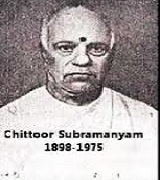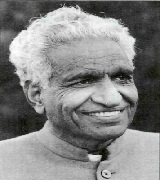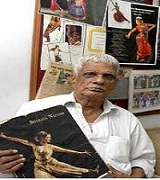Main Feature

Chittoor Subramania Pillai
He earned plaudits not only as a leading performer but also as a teacher, especially in institutions. He was a stalwart among stalwarts in the golden era of Carnatic music. The string of awards and titles is but one aspect of his life and career. As his birth centenary is being celebrated, there should be many among the old who can recall his impressive personality and equally impressive accomplishments, but the story of his life and career must be recounted for the benefit of the young, especially those seeking to make a mark as concert musicians. Early years - Subramaniam was born on 22 June 1898 at Gollamachannapalli, a village in Chittoor district (now in Andhra Pradesh), into a family of musicians. Perayya, his Telugu brahmin father, was a violinist employed by the Punganur Samasthanam in Chittoor district; his mother Mogileswaramma was a vocalist who belonged to the kalavantulu community. There was a tradition among the Teluguspeaking members of this community to call themselves as Naidu.
Special Feature

Gandharva Mahavidyalaya
To me, as to numberless others, the capital's Gandharva Mahavidyalaya [hereafter referred to as Vidyalaya or GMV) is a standing reminder of the late Vinay Chandra Maudgalya's commitment to the cause of music. A Sangeet Acharya and a devoted pupil of the renowned Hindustani vocalist of the Gwalior gharana, Vinayakrao Narayan Patwardhan, the whole life of Vinay Chandra (1918-1995), popularly known as Bhaiji, was a continual struggle to realise the ideal set by the saint-musician, Pandit Vishnu Digambar Paluskar, namely, the objective of bringing classical music close to the masses and restoring its rightful place in their cultural life. The main architect of the institution is doubtless Vinay Chandra. But fairness demands that we also here acknowledge the ungrudging cooperation that he always received from (at least) two other sources: his talented wife Padma Devi, and his selfeffacing younger brother, Vipin Chandra, who still heads the Kamla Nagar branch of the Vidyalaya.
Special Feature

Aiyyelu - Costumes
When Vyjayanthimala founded Natyalaya— an academy for Bharatanatyam— in the late nineteen fifties, she was on the lookout for a costumer to serve in her institution and asked Aiyyelu to work for her. He accepted the offer and was with her school for over 10 to 12 years. During that period, Vyjayanthimala gave several solo dance recitals, trained many students and choreographed many dance-dramas like Azhagar Kuravanji, Andal, Santa Sakkubai, Tiruppavai and Chandalika. For all the dance events, Aiyyelu was the costume-maker and he was given credit to that effect in all the programme sheets. In December 1962 Vyjayanthimala presented her dance-drama Chandalika in Bombay in the distinguished presence of Dr. S. Radhakrishnan, President of India, and the credits in the brochure contained the entry: 'Costume making: D. Ayloo' (sic). Whether the spelling is Ayyalu, Ayloo or Aiyyelu, the name always spelt success.


